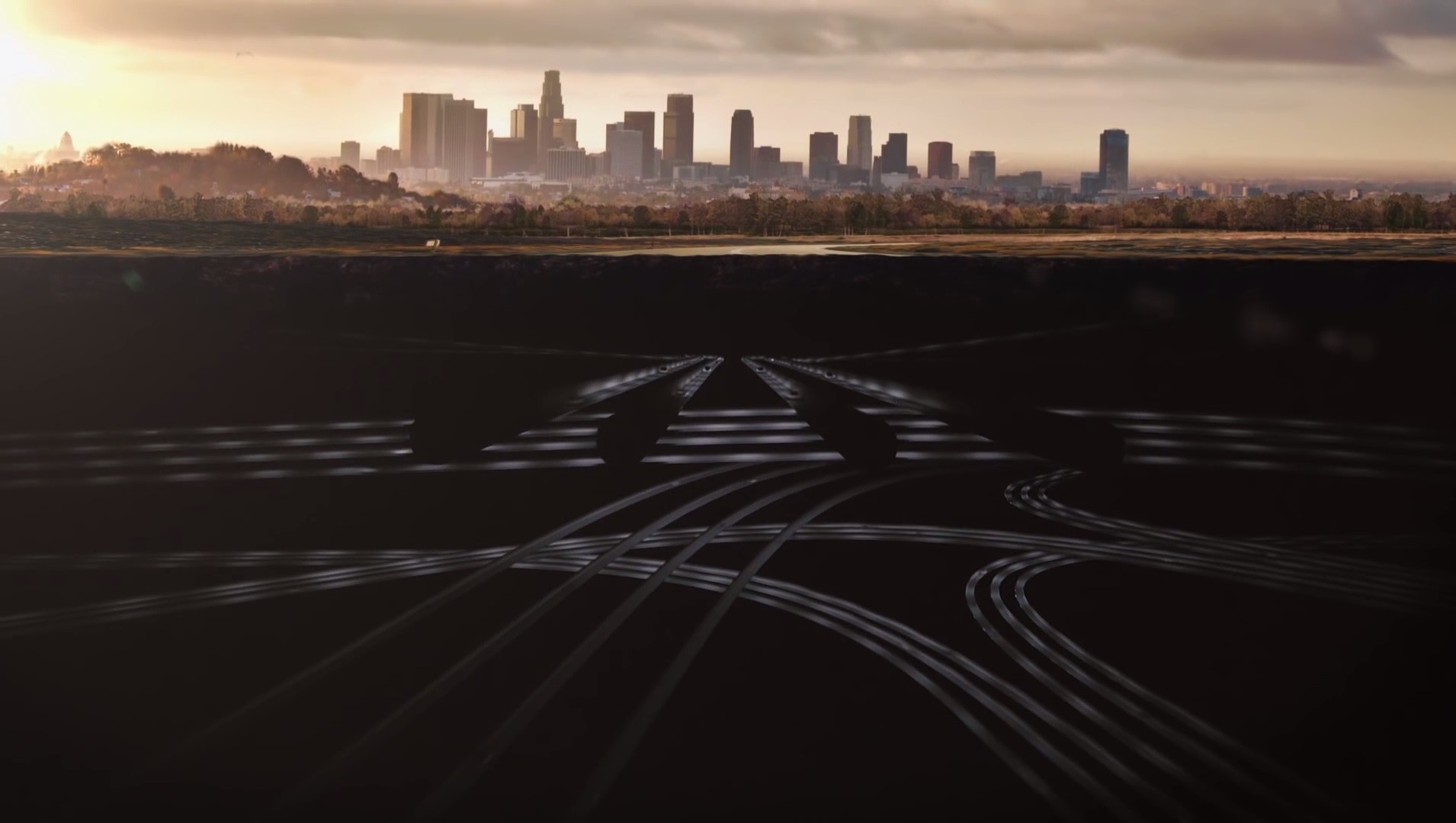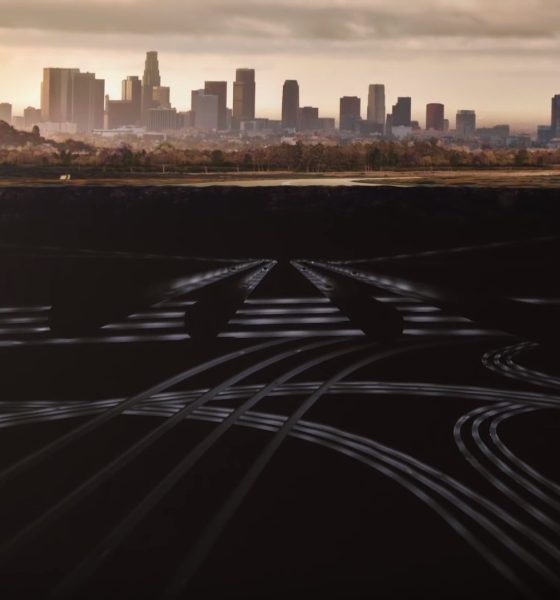

News
Elon Musk and Israel in discussions about Boring Company transport project
Elon Musk’s tunnel digging technology developed by The Boring Company is being eyed by Israel as a potential solution to the country’s traffic and public transportation woes. Israeli Prime Minister Benjamin Netanyahu revealed at a recent campaign event that his government was in talks with the serial entrepreneur about tapping into Boring’s tunneling solutions to address infrastructure concerns.
“I met a man that they call Elon Musk — have you heard of him? A real genius,” Netanyahu said, as published in a report by Bloomberg. ““Right now we’re in conversation with him to see if we can tunnel the State of Israel.” The two men’s discussion took place at the Prime Minister’s residence over a breakfast.

Israel’s population growth has outpaced its infrastructure development thanks to an immigration influx and a surge in economic growth over the last two decades. Its small geographic area – about 290 miles long and 85 miles across at its widest – requires innovative solutions that take its space limitations into account when it comes to transportation solutions.
Several underground rail projects are underway in Israel; however, only one subway system is currently running in the country. It will remain that way until the planned Tel Aviv Light Rail lines become operational, the earliest planned for 2021 to the tune of $3 billion dollars for 14 miles of line. When compared to The Boring Company’s prior expenditure of only $10 million per mile of tunnel, it’s perhaps understandable why Israel would be interested in Musk’s improved digging technology.

Although the Boring Company hasn’t captured many headlines since its Monty Python watchtower days since its Hawthorne test tunnel completion, interest in the developed technology hasn’t waned with those who could benefit from its potential. In Las Vegas, a proposed two-mile transport line to be constructed by Musk’s company was recently approved by the city’s Convention and Visitors Authority board of directors. As planned, a series of underground tunnels will be dug by Boring, encompassing the local convention center and possibly expand to the McCarran International Airport. The estimated cost is between $35 and $55 million, and its completion set for the end of 2019, according to Musk.
The Boring Company’s planned high-speed transit tunnel connecting O’Hare International Airport with downtown Chicago is also still in the works despite criticism from local officials. Musk has estimated a cost of around $1 billion for the 18-mile project, none of which will be a taxpayer burden due to private investment. These private funding plans are a big source of skepticism surrounding Musk’s tunneling project, but enough support within Chicago’s government remains to continue moving forward.
The Hawthorne test tunnel, debuted on December 18th last year with fanfare and test rides, was constructed using a conventional tunnel boring machine (TBM) nicknamed Godot. The next iteration of Boring’s machines, an upgraded hybrid TBM named Line-Storm, will be operational any day now, according to Musk via Twitter. “Maybe active in a month or so. Focus right now is getting to high speed, tight follow distance in test tunnel,” he tweeted in reply to a status inquiry about Line-Storm at the end of February this year.

Line-Storm is estimated to be twice as fast as Gadot and will be succeeded by the all-electric Prufrock, a TBM being completely designed and built by The Boring Company. Prufrock will be 10-15x faster than than conventional machines, plus meet the energy and environmental standards driving all of Musk’s companies by having zero emissions.
Just as with Tesla’s Full Self-Driving technology, though, The Boring Company’s projects face regulatory hurdles and pushback that will likely be a determining factor in whether or not its many projects succeed. It remains to be seen whether Israel will have the same legal obstacles if its Prime Minister’s discussions with Musk manifest into any solid agreements.

News
Tesla FSD fleet is nearing 7 billion total miles, including 2.5 billion city miles
As can be seen on Tesla’s official FSD webpage, vehicles equipped with the system have now navigated over 6.99 billion miles.

Tesla’s Full Self-Driving (Supervised) fleet is closing in on almost 7 billion total miles driven, as per data posted by the company on its official FSD webpage.
These figures hint at the massive scale of data fueling Tesla’s rapid FSD improvements, which have been quite notable as of late.
FSD mileage milestones
As can be seen on Tesla’s official FSD webpage, vehicles equipped with the system have now navigated over 6.99 billion miles. Tesla owner and avid FSD tester Whole Mars Catalog also shared a screenshot indicating that from the nearly 7 billion miles traveled by the FSD fleet, more than 2.5 billion miles were driven inside cities.
City miles are particularly valuable for complex urban scenarios like unprotected turns, pedestrian interactions, and traffic lights. This is also the difference-maker for FSD, as only complex solutions, such as Waymo’s self-driving taxis, operate similarly on inner-city streets. And even then, incidents such as the San Francisco blackouts have proven challenging for sensor-rich vehicles like Waymos.
Tesla’s data edge
Tesla has a number of advantages in the autonomous vehicle sector, one of which is the size of its fleet and the number of vehicles training FSD on real-world roads. Tesla’s nearly 7 billion FSD miles then allow the company to roll out updates that make its vehicles behave like they are being driven by experienced drivers, even if they are operating on their own.
So notable are Tesla’s improvements to FSD that NVIDIA Director of Robotics Jim Fan, after experiencing FSD v14, noted that the system is the first AI that passes what he described as a “Physical Turing Test.”
“Despite knowing exactly how robot learning works, I still find it magical watching the steering wheel turn by itself. First it feels surreal, next it becomes routine. Then, like the smartphone, taking it away actively hurts. This is how humanity gets rewired and glued to god-like technologies,” Fan wrote in a post on X.
News
Tesla starts showing how FSD will change lives in Europe
Local officials tested the system on narrow country roads and were impressed by FSD’s smooth, human-like driving, with some calling the service a game-changer for everyday life in areas that are far from urban centers.

Tesla has launched Europe’s first public shuttle service using Full Self-Driving (Supervised) in the rural Eifelkreis Bitburg-Prüm region of Germany, demonstrating how the technology can restore independence and mobility for people who struggle with limited transport options.
Local officials tested the system on narrow country roads and were impressed by FSD’s smooth, human-like driving, with some calling the service a game-changer for everyday life in areas that are far from urban centers.
Officials see real impact on rural residents
Arzfeld Mayor Johannes Kuhl and District Administrator Andreas Kruppert personally tested the Tesla shuttle service. This allowed them to see just how well FSD navigated winding lanes and rural roads confidently. Kruppert said, “Autonomous driving sounds like science fiction to many, but we simply see here that it works totally well in rural regions too.” Kuhl, for his part, also noted that FSD “feels like a very experienced driver.”
The pilot complements the area’s “Citizen Bus” program, which provides on-demand rides for elderly residents who can no longer drive themselves. Tesla Europe shared a video of a demonstration of the service, highlighting how FSD gives people their freedom back, even in places where public transport is not as prevalent.
What the Ministry for Economic Affairs and Transport says
Rhineland-Palatinate’s Minister Daniela Schmitt supported the project, praising the collaboration that made this “first of its kind in Europe” possible. As per the ministry, the rural rollout for the service shows FSD’s potential beyond major cities, and it delivers tangible benefits like grocery runs, doctor visits, and social connections for isolated residents.
“Reliable and flexible mobility is especially vital in rural areas. With the launch of a shuttle service using self-driving vehicles (FSD supervised) by Tesla in the Eifelkreis Bitburg-Prüm, an innovative pilot project is now getting underway that complements local community bus services. It is the first project of its kind in Europe.
“The result is a real gain for rural mobility: greater accessibility, more flexibility and tangible benefits for everyday life. A strong signal for innovation, cooperation and future-oriented mobility beyond urban centers,” the ministry wrote in a LinkedIn post.
News
Tesla China quietly posts Robotaxi-related job listing
Tesla China is currently seeking a Low Voltage Electrical Engineer to work on circuit board design for the company’s autonomous vehicles.

Tesla has posted a new job listing in Shanghai explicitly tied to its Robotaxi program, fueling speculation that the company is preparing to launch its dedicated autonomous ride-hailing service in China.
As noted in the listing, Tesla China is currently seeking a Low Voltage Electrical Engineer to work on circuit board design for the company’s autonomous vehicles.
Robotaxi-specific role
The listing, which was shared on social media platform X by industry watcher @tslaming, suggested that Tesla China is looking to fill the role urgently. The job listing itself specifically mentions that the person hired for the role will be working on the Low Voltage Hardware team, which would design the circuit boards that would serve as the nervous system of the Robotaxi.
Key tasks for the role, as indicated in the job listing, include collaboration with PCB layout, firmware, mechanical, program management, and validation teams, among other responsibilities. The role is based in Shanghai.
China Robotaxi launch
China represents a massive potential market for robotaxis, with its dense urban centers and supportive policies in select cities. Tesla has limited permission to roll out FSD in the country, though despite this, its vehicles have been hailed as among the best in the market when it comes to autonomous features. So far, at least, it appears that China supports Tesla’s FSD and Robotaxi rollout.
This was hinted at in November, when Tesla brought the Cybercab to the 8th China International Import Expo (CIIE) in Shanghai, marking the first time that the autonomous two-seater was brought to the Asia-Pacific region. The vehicle, despite not having a release date in China, received a significant amount of interest among the event’s attendees.








